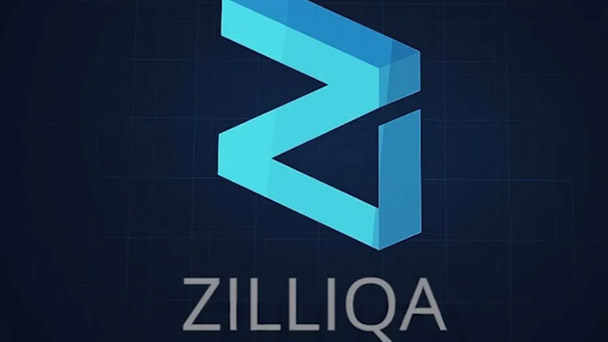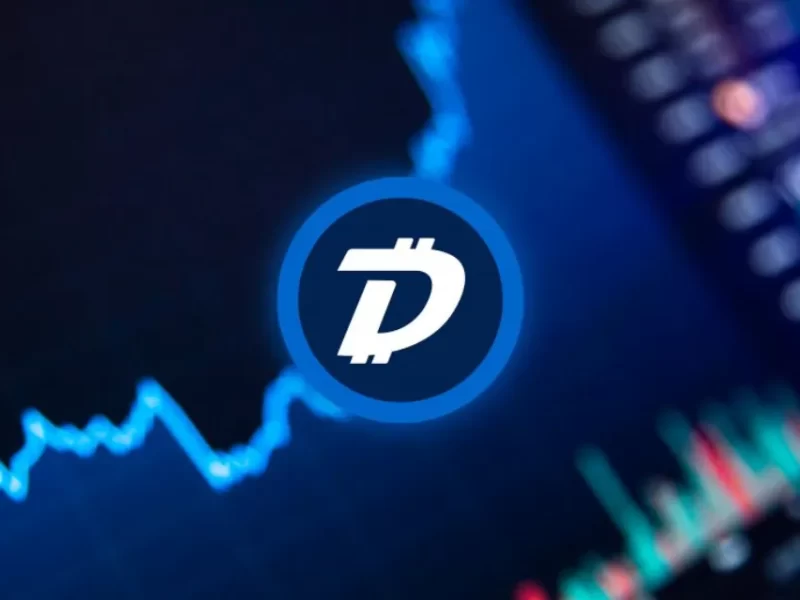Zilliqa (ZIL) is a high-performance permissionless blockchain that enables developers to program powerful smart contracts for enterprises and applications in a secure manner. Notably, it was the first public blockchain to implement sharding on its mainnet. This integration has given Zilliqa (ZIL) the ability to scale in a near-linear fashion to meet the needs of its growing user base.
What is Zilliqa (ZIL)?
In 2017, Zilliqa released its native ERC-20 token, known as ZIL. The token was made available through the Zilliqa token generation event (TGE) that was terminated in Q1 2018. Subsequently, the tokens were transferred to the Zilliqa mainnet in 2020 as part of a token swap. This way, Zilliqa became its own, independent blockchain with its own native token.
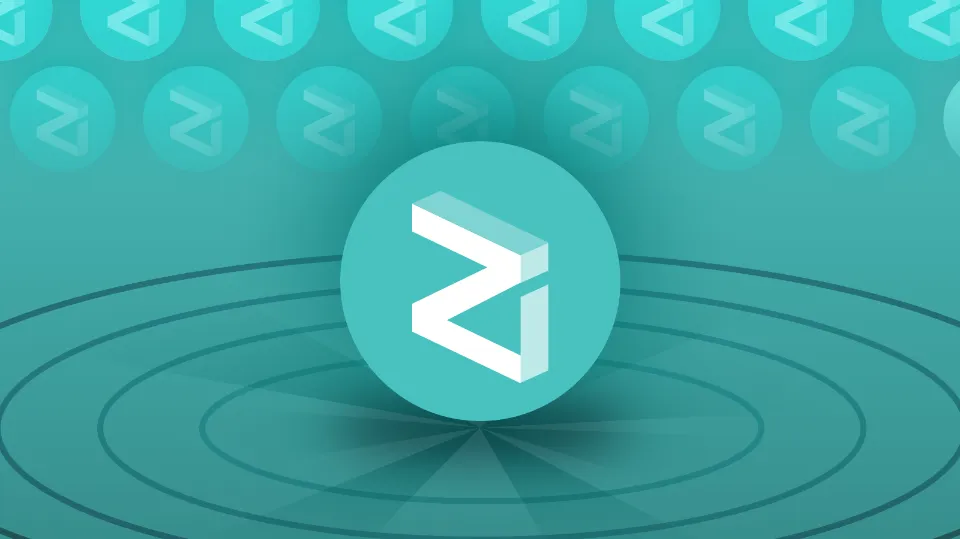
1. Who Controls Zilliqa (ZIL)?
In accordance with a plan announced on Feb. 28, 2022, Amrit Kumar, one of the key figureheads of Zilliqa (ZIL), stepped down from all of his posts in the company.
Governance ZIL (gZIL) is the Zilliqa network governance token, and it enables long-term token holders to participate in the Zilliqa ecosystem. Every gZIL represents one vote, and the more you hold, the more voting power you have.
Zilliqa was founded in June 2017 by co-founders Amrit Kumar and Xinshu Don. Both were researchers at the National University of Singapore. Nine months later the testnet went live. And in January 2019, the Zilliqa mainnet was finally going live.
Zilliqa is one of several competing blockchains that aims to create an ecosystem of decentralized applications (DApps). In a 2018 position paper, the Zilliqa team announced that the protocol aims to compete with centralized-payment systems such as Visa and Mastercard.
The native utility token of Zilliqa is ZIL and is used to pay for transaction fees and run smart contracts.
2. Who Created Zilliqa (ZIL)?
Zilliqa was launched in June 2017 by co-founders Amrit Kumar and Xinshu Don, two researchers from the National University of Singapore. The network’s mainnet went live in January 2019. The project held an Initial Coin Offering (ICO) of the ZIL token in 2017, at the time raising over $22 million in ETH.
The crypto industry as a whole has recently erased some of 2022’s losses. But those gains are minor when compared with Zilliqa’s recent surge. The main driver behind Zilliqa’s growth is the launch of its Metapolis metaverse. The launch included several big partnerships, such as a recent deal with Agora, a global talent awards app. Zilliqa wants to use these agreements to make Metapolis stand out in sectors such as esports, luxury, and music.
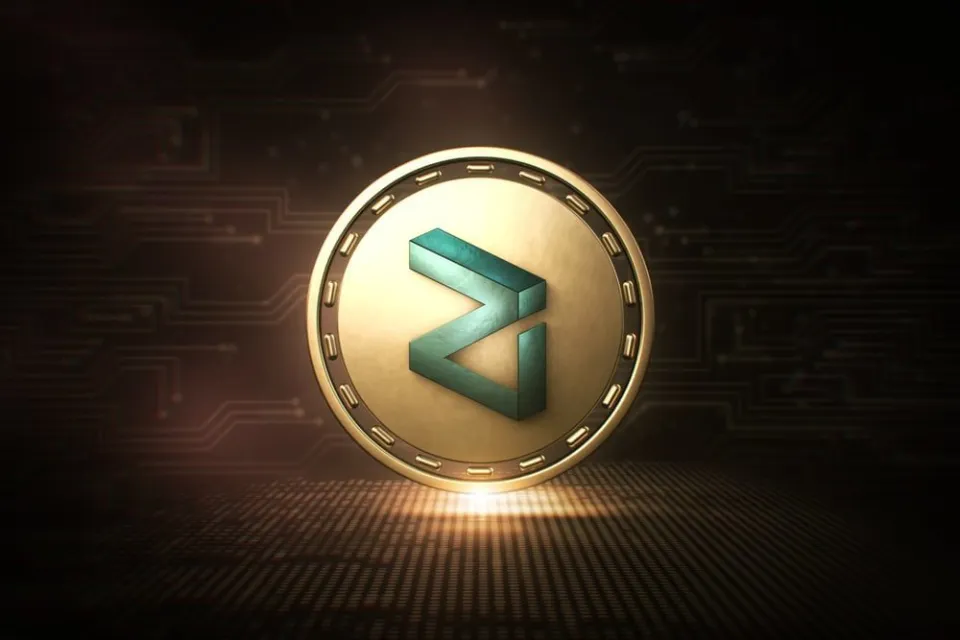
It boasts that this is the first ever metaverse as a service (MaaS) platform on a layer 1 blockchain. A layer 1 blockchain is the base network, such as Ethereum (ETH) or Bitcoin (BTC). MaaS essentially means it provides a framework that other companies or projects can use to develop their own virtual worlds. Metapolis also wants to focus on ways to integrate what’s real and what’s virtual.
3. Zilliqa (ZIL) Pros and Cons
Zilliqa (ZIL) Pros:
- Decentralized
There is no central coordinator in Zilliqa. The network operates as code and a cryptocurrency. Users never have to worry about their transactions being revoked, blocked, or their funds confiscated because there is no authoritative group to carry these actions out. In this way, Zilliqa provides regular users with a decentralized alternative in the market.
- Security
Zilliqa’s structure also helps it to remain secure. The network has never been successfully hacked since its entrance into the market. The sharded structure of the blockchain, coupled with its enterprise-grade security features, enables developers to create exciting Dapps with confidence. Sharded blockchains aren’t new to the sector. However, Zilliqa is among the first public blockchains to implement such a measure.
- Low Fees
In terms of transaction fees, Zilliqa is well below the average rate of PoW networks like Bitcoin. The reason Zilliqa transactions only cost a fraction of the competition is because the network avoids all the congestion that normally drives gas prices and miner fees up on other blockchains. It’s also these low fees that make micro-payment a reality on the platform.
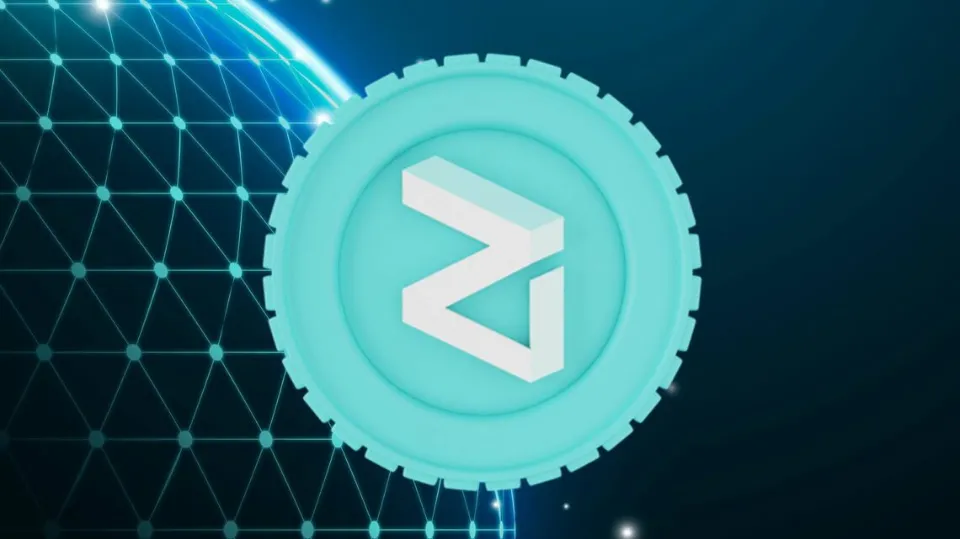
Zilliqa (ZIL) Cons:
- A major hurdle in the development of Zilliqa has been the inclusion of smart contracts, especially as it uses sharding technology.
- Zilloqa is not Turing complete and cannot be used to create applications
4. The Difference Between Zilliqa (ZIL) and Traditional Currencies
The main difference between them is, the traditional currency is a centralized system and bitcoins are decentralized one and peer-peer systems. Hence there are no central authorities to regulate rules and regulations on a bitcoin transaction. But a traditional currency is strictly regulated by the governmental authorities. Both the bitcoins and fiat currency have values which can be used for buying and selling of goods in the market.
- Flexibility
With traditional currency functioning for five days a week and die to transaction restriction, there is a chance of freezing of currency. There is no limit in the number of currencies, being printed, and hence when there is inadequate currency, it will affect the buyers and sellers, resulting in inflation.
- No Fraudulent Activity
If you want to transact with a traditional currency system, the users have to provide personal details like name, address, phone number, and lots more. So, with the internet technology, the malicious user will be able to hack the account details of the traditional currency system easily. Traditional currency can suffer from double-spending, where the same money is used for more than one transaction.
- Reduced Cost
In a traditional banking system, for making a national transaction, it will take 2-3 working days, and the transaction fees will be high. In the case of international transactions, the transaction fee will be very higher, and it will take 15 days to complete the transaction. In a Cryptocurrency system like bitcoins, there is no transaction fee for making a national transaction. The transaction will also take place in seconds or within 24 hours.
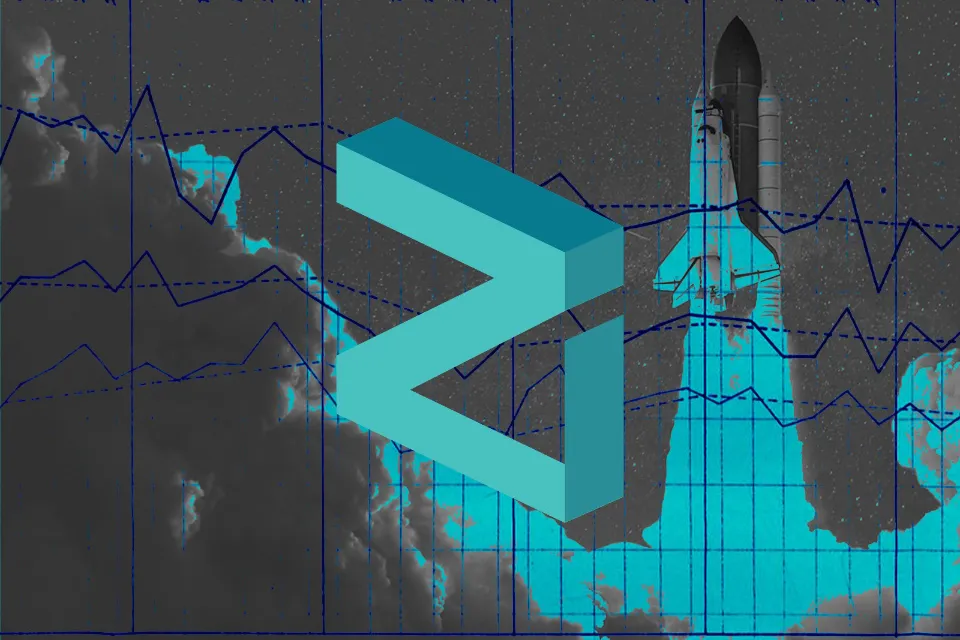
5. Is It Safe To Use Zilliqa (ZIL)?
Zilliqa has gained plenty of traction among crypto enthusiasts, thanks to its potential for versatility and scalability. This is ultimately why many users agree that Zilliqa is a good investment. The crypto world has been waiting to see how the Zilliqa network will provide the services it’s been promising since its ICO in 2018. So who stands to benefit the most from Zilliqa? Zilliqa is the first blockchain to enable sharding on its mainnet, leading to scalability, fast transaction times and low fees.
In the midst of the DeFi boom, Zilliqa is increasingly attractive to developers of DApps and smart contracts. By utilizing Scilla — smart contract intermediate-level language — to create smart contracts, Zilliqa provides a smart contract language that’s easier to understand and more secure overall, remedying the security vulnerabilities of other common languages.
The platform has demonstrated a lot of promise. Its quick transaction speeds have piqued the interest of many people in the crypto community, and it finally looks like it’s gaining some traction. To incentivize long-term holders, users can stake ZIL on the blockchain for returns. This increases the network’s decentralization and creates additional utility for ZIL.
How Does Zilliqa (ZIL) Work?
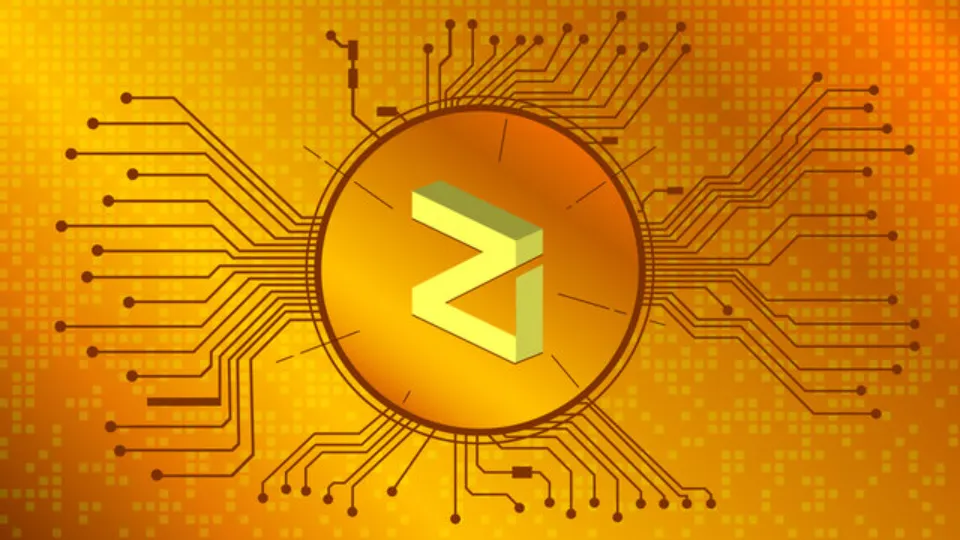
The Zilliqa network offers many features common to other cryptocurrency networks such as smart contracting, transaction settlement, and token issuance.
Developers can use its proprietary language, Scilla, to run custom programming logic (smart contracts) and design new programs (decentralized applications) to offer a variety of products and services.
While this system is complex in implementation, Zilliqa is ultimately designed to execute smart contracts and confirm network transactions in a scalable and efficient manner.
- Sharding
Sharding is a structural technique that splits the network into several pieces, or shards, allowing nodes to only process a fraction of the network’s transactions.
Each shard acts as its own blockchain and allows nodes assigned to them to store data, process transactions and add new blocks to their specific shard chain, called microblocks.
Microblocks are then combined into a transaction block by Directory Service Nodes (or DS nodes) to be added to the Zilliqa blockchain.
Of note, the shard nodes contain a specific subset of the Zilliqa blockchain, and do not have to store Zilliqa’s entire history.
- Practical Byzantine Fault Tolerance (pBFT)
Central to Zilliqa is the Practical Byzantine Fault Tolerance (pBFT) governance mechanism that keeps the distributed network of computers in sync.
In order for nodes to power the blockchain and vote on changes, they must first stake ZIL, meaning that anyone who owns ZIL can help operate the network. Using pBFT, all nodes assigned to specific shards must agree before a microblock is finalized and combined into a transaction block.
Each node is subsequently rewarded with a portion of the block reward for validating the transactions.
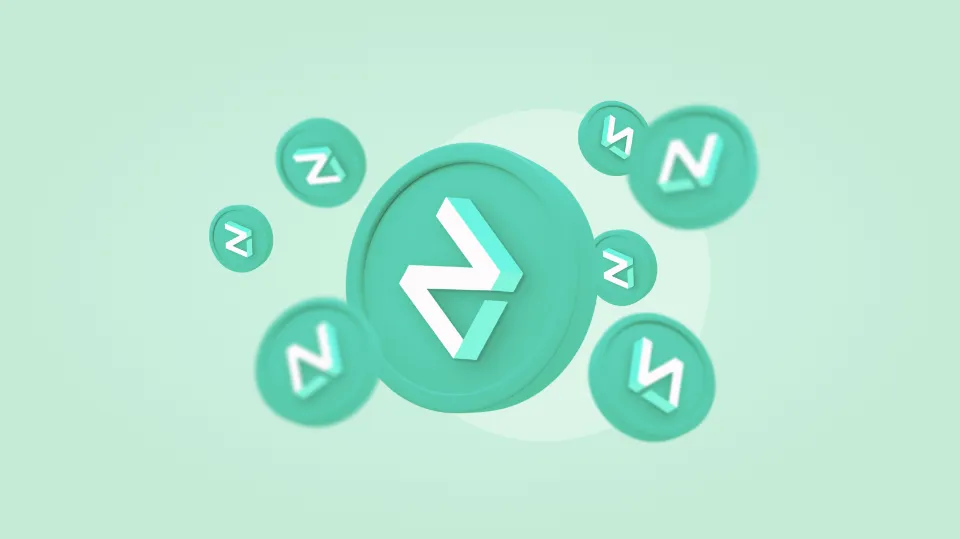
How to Make Money with Zilliqa (ZIL)?
Here are quite a few approaches for us to make money with Zilliqa (ZIL), such as Mining, Buying & Hold Bitcoins, Accept Payments in Zilliqa (ZIL), Earning Zilliqa (ZIL) by turning into an Affiliate, Lending Zilliqa (ZIL), and Micro Earnings, and Trading.
- Zilliqa (ZIL) Mining
- Buy & Hold Zilliqa (ZIL)
- Accept Payments in Zilliqa (ZIL)
- Determine how you’ll use Zilliqa (ZIL)
- Find a Zilliqa (ZIL) wallet
- Find a Zilliqa (ZIL) payment processor
- Accept Zilliqa (ZIL) payments
- Becoming an Affiliate
- Lending Zilliqa (ZIL)
- Micro Zilliqa (ZIL) Earnings (Faucets, Offer Wall, Short Links, Surf Ads……)
- Zilliqa (ZIL) Games
- Micro Zilliqa (ZIL) Tasks
- Trade Zilliqa (ZIL)
How to Buy Zilliqa (ZIL)?
1. Things To Know Before You Buy Zilliqa (ZIL)
Buying Zilliqa (ZIL) and holding onto it in hopes it will appreciate in value, is the most common form of “investing”. As with all investing, you should never invest more than you are willing/able to lose. This is especially true with Zilliqa (ZIL), since it’s still a very risky investment.
The most important thing to keep in mind when buying Zilliqa (ZIL) is to make sure to buy only from exchanges that have proven their reputation.
Another key tip is to make sure you don’t buy all of your Zilliqa (ZIL)s in one trade. Instead use a dollar cost averaging method—buy a fixed amount every month, week or even day throughout the year. This ensures that you buy the most Zilliqa (ZIL) when it’s on the rise, and less when it’s going down in Zilliqa (ZIL) price.
2. How to Buy Zilliqa (ZIL) on a Crypto Exchange
Zilliqa (ZIL) is currently available for purchase on the following exchanges.
- Coinbase – Secure online platform for buying, selling, transferring, and storing cryptocurrency.
- eToro – Trade and invest in a diversified portfolio, starting at $10, or practise risk-free with a virtual portfolio.
- Bitfinex – Digital asset trading platform offering state-of-the-art services for digital currency traders and global liquidity providers.
- Binance – Low trading fees, a generously wide range of leverage, and high liquidity.
- KuCoin – A large cryptocurrency exchange offering the ability to buy, sell, and trade cryptocurrencies
3. How to Buy Zilliqa (ZIL) with Cash
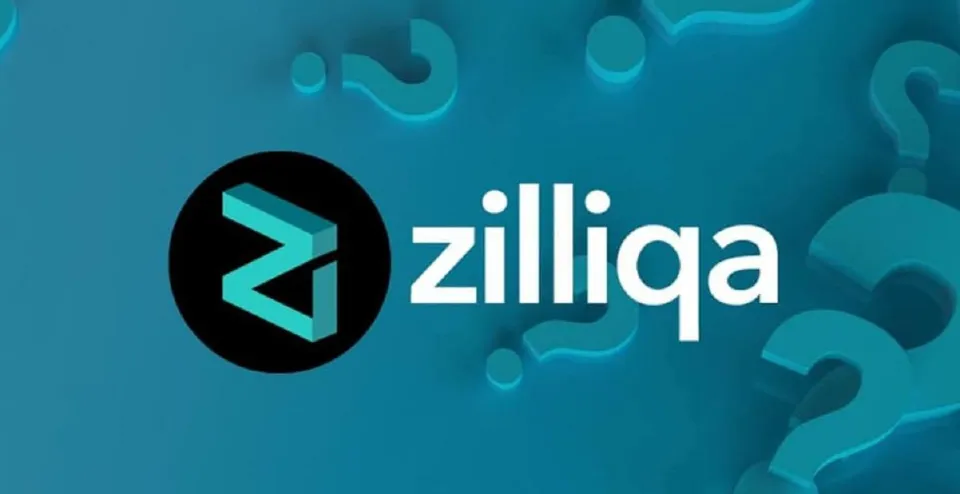
- Find a seller in your area who accepts cash.
- Select amount of coins and place an order.
- Receive account number from the seller.
- Deposit cash into the seller’s account.
- Upload your receipt to prove you made the deposit/trade.
- Receive Zilliqa (ZIL)!
4. How to Buy Zilliqa (ZIL) with Credit Card
Not all platforms will allow you to use a credit card to make your Zilliqa (ZIL) purchases. If you do choose a platform allowing such transactions, keep in mind that there may be extra fees associated with the purchase. Many credit card companies process cryptocurrency purchases via credit card as cash advances, which can incur high interest rates, among other fees.
5. How to Buy Zilliqa (ZIL) with Paypal
- Login to Paypal and Select Cryptocurrency
- Select ‘Zilliqa (ZIL)’
- Select ‘Buy’
- Choose How Much You Want to Buy
- Select Payment Method
- Hit the ‘Buy’ button
6. Should I Buy Zilliqa (ZIL) In 2022?
Zilliqa’s native asset ZIL is a good investment in 2022. Users can obtain ZIL coins by purchasing them from cryptocurrency exchanges such as Binance, or Huobi Global. Will Zilliqa surpass its current ATH? ZIL is a good investment in 2022.
According to a short-term ZIL price prediction from CoinCodex, as of 5 April, the value of the token could fall by 3.6% to $0.13 by 10 April. CoinCodex added that technical indicators showed the current sentiment for ZIL as ‘neutral’.
“Based on our Zilliqa forecast, now is a good time to buy Zilliqa,” said CoinCodex.
Meanwhile, zilliqa crypto price prediction from Wallet Investor said: ”Our AI cryptocurrency analyst implies that there will be a negative trend in the future and the ZIL is not a good investment for making money.”
Wallet Investor’s zilliqa prediction expected ZIL value to drop to an average price of $0.114 by the end of 2022, slip to $0.1032 by the end of 2023 and fall further to $0.0822 by the end of 2025. Its five-year ZIL coin price prediction suggested the cryptocurrency could trade at an average price of $0.0728 by the start of 2027.
According to Price Prediction’s ZIL forecast, the token could hit an average price of $0.054 in 2022, growing to $0.17 by 2025 and rising further to $1.10 by 2030.
Digital Coin’s ZIL crypto price prediction expected the ZIL token price to trade at an average of $0.18 in 2022. Its ZIL prediction suggested the token could hit a maximum price of $0.29 by 2025 and $0.65 by 2030.
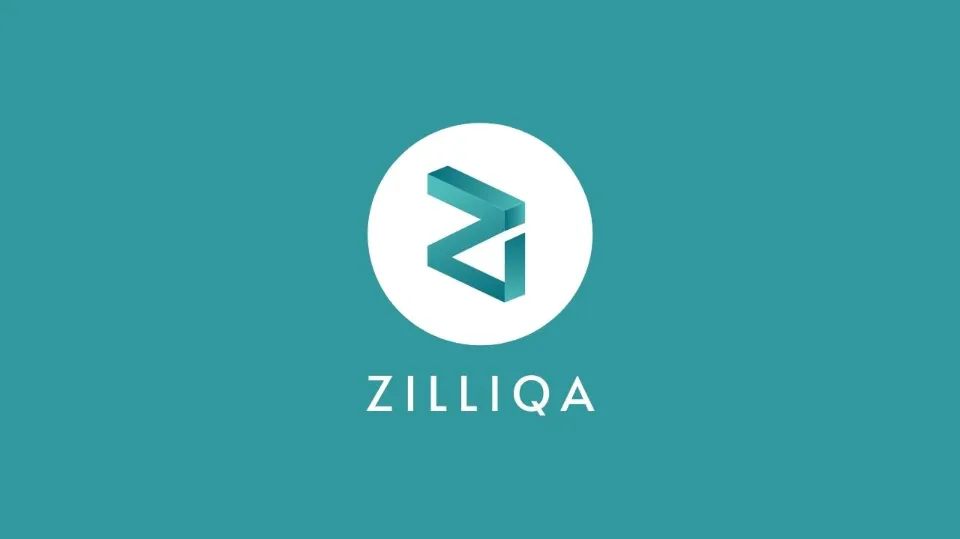
When looking for a ZIL price projection, bear in mind that analysts’ and algorithm-based zilliqa coin price predictions can be wrong. Their expectations are based on fundamental and technical studies of the cryptocurrency’s past performance, which offers no guarantee of future results.
It’s essential to do your own research. Always remember that your decision to trade depends on your attitude to risk, your expertise in the market, and your investment portfolio spread. You should never trade money that you cannot afford to lose.
Read More: How to Buy Zilliqa (ZIL)?
How to Sell Zilliqa (ZIL)?
1. Things to Know Before You Sell Zilliqa (ZIL)
To get started with Zilliqa (ZIL), you’re going to need three things: an exchange, a wallet and the knowledge of how to buy the cryptocurrency. This last one is easy with our guide on how to buy Zilliqa (ZIL), but the other two are still important. The exchange allows you to buy Zilliqa (ZIL) from sellers, and the wallet gives you somewhere to store it long term.
When choosing an exchange, you should look for one with many users, good customer support and low fees. Three particularly popular exchanges with newcomers are Coinbase, Robinhood and Binance. However, there’s nothing really tying you to a specific exchange, so you can try new ones and quickly change at any time.
On the other hand, wallets can be much more complex. “Cold wallets” — physical devices holding cryptocurrencies offline — come with a steep up-front cost, but “hot wallets” — pieces of software that hold your coins on a computer — are often less secure. However, since hot wallets are fine for short-term storage and free to set up, it’s a good idea to start with them.
2. Sell Zilliqa (ZIL) in Cryptocurrency Exchanges
- Step 1: Set up an exchange account
- Step 2: Transfer your Zilliqa (ZIL) to your exchange wallet
- Step 3: Place a sell order
3. Sell Zilliqa (ZIL) in P2P Trading
- Step 1: Go to the P2P Trading Page
- Step 2: Choose to Sell and Set Your Currencies
- Step 3: Find a Buyer
- Step 4: Choose How Much You Want to Sell
- Step 5: Send the Offer
- Step 6: Confirm the Release
4. Sell Zilliqa (ZIL) in Zilliqa (ZIL) ATMs
- Step 1: Choose withdraw cash
- Step 2: Choose Zilliqa (ZIL) (these machines normally may support other cryptocurrencies)
- Step 3: Choose amount to withdraw
- Step 4: Send Zilliqa (ZIL) to given address QR code
- Step 5: Receive cash immediately as Zilliqa (ZIL) transaction is propagated on the network
Read More: How to Sell Zilliqa (ZIL)?
What Is Zilliqa (ZIL) Mining?
Zilliqa (ZIL) mining is the process of creating new Zilliqa (ZIL) by solving extremely complicated math problems that verify transactions in the currency. When a Zilliqa (ZIL) is successfully mined, the miner receives a predetermined amount of Zilliqa (ZIL).
PoW serves as an entry ticket to the network. Only nodes holding valid tickets can join, making it difficult for any real-world entity to span multiple nodes and take down the network.
Zilliqa does not use PoW as a consensus mechanism. Instead, it uses a Practical Byzantine Fault Tolerance (PBFT) protocol.
One reason Zilliqa uses PoW in this way is to prevent Sybil attacks, which assumes no more than a third of nodes in the network are malicious.
Three reasons why PBFT is beneficial:
- PBFT enables transaction finality.
- Since PoW is only used to prevent Sybil attacks (not for consensus), it’s also energy-efficient.
- PBFT allows for block rewards to distribute more evenly to miners.
1. How Does Zilliqa (ZIL) Mining Work?
If you are looking to mine Zilliqa, keep in mind that before you do so, invest some time into researching if your setup will actually generate you any profit. Zilliqas price can fluctuate and the amount of miners also plays a great deal in your chances of making a profit. At the current price of ZIL, consider how much worth it setting up a mining rig would be. Hardware that would be most powerful for mining would be ASICs which are unfortunately nowadays extremely pricey. If mining with a computer, a GPU won’t generate a large turnout but it might be something for the start when mining Zilliqa. Mining profitability charts can show you how much USD you can make for 1 Mh/s of hash rate. These charts also have the electricity expenses covered. Mining difficulty increases by the number of miners and every time the demand for a larger hash rate increases. Your hash rate is basically how much computing power you are providing for mining new blocks. This takes what is called “block time”.
2. How to Mine Zilliqa (ZIL)?
The Zilliqa Client is officially supported on Ubuntu 18.04 OS.
The minimum requirements for running the Zilliqa Client are:
- x64 Linux operating system (e.g Ubuntu 18.04.5)
- Recent dual-core processor @ 2.2 GHZ. Examples: Intel Xeon (Skylake)
- 8GB DRR3 RAM or higher
- Public static IP address
- 50GB Solid State Drive
- Any GPUs with at least 2 GB RAM
- 100MB/s upload and download bandwidth
3. Hardware for Zilliqa (ZIL) Mining
After you get the wallet, choose the hardware you want to use. One of the most profitable options is the Innosilicon A10 or Pro version. Remember to use a Zilliqa mining calculator before buying any hardware equipment because sometimes it can be really expensive.
This miner is a two-story device in a rectangular metal case with cooling fans at the end. The Innosilicon A10 is very noisy and requires a separate soundproofing room. Above is a controller block with indicators, a start button, and an Ethernet network connector. Inside the Innosilicon A10 case, there are three motherboards with chips. The price of Innosilicon A10 is about $4,000, so calculate all the electricity cost and profitability before buying one.
Next, you should choose the software to start the Zilliqa mining process finally. There are such options as Zilliqa Client, ZilMiner, and Zilliqa Mining Proxy. They support Linux, Ubuntu, and Windows OS.
You can mine ZIL cryptocurrency both solo and in the pool. There is an Ezil.me pool, which supports dual mining with Ethereum and Ethereum Classic. You can also use such pools as Rustpool, Shardpool, and K1pool.
How to Get Free Zilliqa (ZIL)?
Most genuine websites that allow you to earn free Zilliqa (ZIL) require you to spend money on other things like buying cloud computer mining power, connecting your CPU for mining, playing a game, or completing micro-tasks.
In other words, they offer free Zilliqa (ZIL)s as an advertisement for their services. Otherwise, it takes time and effort to get free Zilliqa (ZIL) given its current high value.
- Zilliqa (ZIL) Faucet
- Zilliqa (ZIL) PTC Sites
- Zilliqa (ZIL) Airdrop
- Zilliqa (ZIL) GameFi
- Zilliqa (ZIL) Bounties
- Learning About Zilliqa (ZIL)
- Shopping Reward
- Zilliqa (ZIL) Interest
- Owning a Zilliqa (ZIL) Faucet
- Write about Zilliqa (ZIL)
- Zilliqa (ZIL) Affiliate Program
- Free Zilliqa (ZIL) Cloud Mining
What is a Zilliqa (ZIL) Wallet?
1. Zilliqa (ZIL) Wallets for Beginners
- Binance
Binance was established in 2017 and started developing quickly. As a result of the Binance team activity, the exchange became one of the largest service providers in the cryptocurrency market.
Benefits of Binance:
- Outstanding growth in liquidity just in one year;
- A lot of different altcoins are supported;
- Multi-language interface;
- Intuitive navigation;
- Verification is optional.
Many people use Binance to simply store their tokens for the long term. Aside from the storage option, it offers a wide range of trading tools and decent customer support.
- MyEtherWallet
Although MyEtherWallet was created for storing Ethereum tokens of ERC-20 standard, it also supports Zilliqa coin. This is a desktop ZIL wallet that must be installed on your PC. Today there are a lot of online wallets that offer their cryptocurrency storage services. All cryptocurrency is stored on your PC, and the private key never goes online.
Although installation might be somewhat challenging, and you’ll have to download megabytes on data on your PC, this is the safest way of keeping your crypto assets at the fingertips, available to you in a couple of clicks.
- Gate Wallet
Gate American cryptocurrency trading platform was established in 2016 and is widely used all over the world. During the first year of its existence, the exchange managed to reach $150-200 mln daily trading volume. Today, the Gate cryptocurrency exchange is also often used by investors as a wallet for storing cryptocurrencies, and the main reason for that is the support of numerous altcoins, including ZIL crypto coin.
- Moonlet Wallet
In 2019, Zilliqa cryptocurrency news headings were flashing with words like “Moonlet Wallet launch”. Zilliqa team has presented their own wallet that boasts a couple of interesting features.
- It’s independent of the blockchain and can easily assimilate new functions from both Zilliqa and Ethereum;
- Personal data is stored by users only – it’s not saved on third-party servers;
- The wallet can run as a Chrome extension;
- The possibility of importing private keys from other wallets.
2. How To Make A Zilliqa (ZIL) Paper Wallet?
Although there are ways to manually generate a private key, the vast majority of paper wallet creators use a private key generator. Once a private and public key have been created, you are able to print a paper wallet, which because it’s not online doubles as a cold storage wallet. This will include the public and private key you’ve generated, usually as both a string of characters and QR codes.
Anyone with a paper wallet’s public key can send crypto to it as often as they like. Using the corresponding private key, you can move the crypto balance of the paper wallet into a software wallet. This transfers the funds to a new private key on your software wallet.
3. Ways To Set Up a Zilliqa (ZIL) Wallet
There are many Zilliqa (ZIL) wallets out there, and all of them differ in their characteristics. Mobile software wallets are great for day-to-day use, while desktop software wallets bring about a great balance between convenience and security. Lightweight web wallets are the best choice for quick online transactions. Cold encrypted hardware wallets like Ledger or Trezor are the best for long-term storage of bitcoin. However, unlike other options, hardware wallets aren’t free and cost $50 or more.
Set up a Zilliqa (ZIL) Software Wallet
- Mycellium
- Bread (BRD) wallet
- Bitcoin wallet
- Electrum
- Samourai
Set up a Zilliqa (ZIL) Web Wallet
- Coinbase
- Blockchain.info
- BTC.com
- Rahakott
- BitGo
Set up a Zilliqa (ZIL) Hardware Wallet
- Ledger
- Trezor
- BitLox
- KeepKey
How to Buy and Sell Zilliqa (ZIL) In Different Area?
1. How to Buy and Sell Zilliqa (ZIL) in India?
You can get Zilliqa (ZIL) in India mainly through buying and mining. To buy it, you can use several online exchanges such as WazirX, Coinbase, BuyUcoin, and CoinDCX. Choosing the best online exchange is another task, but here are a few things you should keep in mind while buying the cryptocurrency in India.
- It’s best to go with an exchange that allows you to withdraw cryptocurrency in INR to your personal online wallet for safekeeping
- Make sure that the internet connection is secure. Also, don’t forget to use safe internet practices like two-factor authentication and unique and strong passwords.
- KYC aka Know Your Customer verification is a must, at least in India. For that, you can use a PAN card and valid address proof
- Now, add the bank account that is linked to your PAN card. Verification will take around 2-3 days
After the verification is complete, you can start trading Zilliqa (ZIL) in India. Money from your bank accounts can be transferred using NEFT, RTGS, and debit and credit cards. Currently, the value of one Bitcoin is around 27 lakh; however, you don’t have to buy a whole coin to begin investing. You can buy Bitcoin in parts, i.e. small investments for as low as Rs 500. That way, you will own a small percentage of the cryptocurrency.
2. How to Buy and Sell Zilliqa (ZIL) in Canada?
- Sign up and get KYC (Know-Your-Customer) verified on a Canadian crypto exchange like Bitbuy.
- Deposit CAD to the exchange directly from your bank account.
- Buy Zilliqa (ZIL).
- Store Zilliqa (ZIL) on your exchange account or transfer it to a wallet.
3. How To Buy and Sell Zilliqa (ZIL) In The UK?
- Create a Coinbase account.
- Complete identity verification to access fiat payment options.
- Navigate to the Accounts and select the GBP wallet.
- Fund your account using Bank Transfer or other methods.
- Once the deposit is complete, go to the Buy/Sell page and select GBP to Zilliqa (ZIL).
4. How To Buy Zilliqa (ZIL) in the United States?
The best way to buy and sell Zilliqa (ZIL) in the USA is through an exchange such as Coinbase, Kraken, Gemini, Coinmama, Binance, or Changelly. There is a plethora of options available, so it is best to look at each of the exchanges’ processes for deposits and withdrawals, fees, and transaction speeds to determine which is best for you.
Zilliqa (ZIL) FAQs
1. Zilliqa (ZIL) History
Zilliqa is a Singapore-based project, developed out of the National University of Singapore as a blockchain thesis project. Prateek Saxena and Loi Luu coauthored a white paper in 2016 that shed some light on the idea of blockchain sharding.
Following publication of the white paper, Saxena founded Anquan Capital, and Loi Luu founded Kyber Network. Shortly after, Xinshu Dong was hired as the head of engineering at Anquan Capital, and the company agreed to begin the Zilliqa project.
In June 2017, Zilliqa was launched. It was cofounded by Amrit Kumar, the project’s chief scientific officer; Jia Yaoqi, the project’s chief technology officer; Xinshu Dong, the project’s former chief executive officer; and Max Kantelia, an advisor and board member. These individuals are PhD computer scientists, researchers and engineers. That’s how Zilliqa got its start.
In a private fundraising round at the end of 2017, Zilliqa raised the equivalent of $12 million in ETH. Because of the rising price of ETH, that initial private investment rose to a significant value of the project’s hard cap of $20 million.
In May 2018, the Scilla smart contract programming language was released. The testnet went live in November of that year, and the project invited miners and developers to help test the network. Zilliqa then launched smart contract functionality and transactions in 2019.
2. Where Can I Use Zilliqa (ZIL)?
The sharded structure of Zilliqa makes it an ideal blockchain for processing more complex computational tasks such as data mining and financial modeling. Zilliqa can also be used for training neural networks, machine learning (ML) applications, and data-based academic research.
3. Who is Zilliqa (ZIL) Backed By?
The network’s mainnet went live in January 2019. The project held an Initial Coin Offering (ICO) of the ZIL token in 2017, at the time raising over $22 million in ETH. Zilliqa is supported by the founding Zilliqa Research company as well as a growth initiative company, ZILHive.
4. Is Zilliqa (ZIL) a Layer 1 or 2?
Zilliqa (ZIL) is a layer 1 blockchain competing with Bitcoin and Ethereum. Zilliqa network uses Sharding mechanisms to enhance the scalability and decentralization of the network.
5. Is Zilliqa Built on Ethereum?
Whilst this is happening, Zilliqa coin (ZIL) is based on the Ethereum blockchain. It follows the rules Ethereum has set out for new coins that are built on its network. Zilliqa coin is therefore known as an ERC-20 token
6. Is Zilliqa (ZIL) Its Own Blockchain?
Zilliqa is a smart contract blockchain. This means programmers can develop decentralized applications (dApps) that run on Zilliqa. The following is a list of Zilliqa features: Low Cost – Sharding allows for a large number of transactions per second, so the cost of each transaction is low.
7. What Makes Zilliqa (ZIL) Unique?
Zilliqa solves blockchain scalability issues using its unique sharding technique, allowing it to scale linearly as the network grows. Its ability to handle a large volume of transactions makes it ideal for businesses and dApps that require high throughput.
8. Is Zilliqa (ZIL) a Web 3?
With Zilliqa diving into the world of Web3, this integration is timely. Making ZIL more accessible will play an important role as we take-to-market game-changing metaverse and NFT platforms like Metapolis and Rialto.”
9. Is Zilliqa (ZIL) a DeFi?
Zilliqa continues to invest millions into DeFi projects. Zilliqa’s ecosystem enables DeFi apps, including lending services, DEXes, stablecoins, and asset marketplaces.

